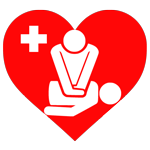Step-by-Step Guide to Performing CPR: What You Need to Know

Mastering CPR: A Comprehensive Guide
Step 1: Assess the Situation
Before starting CPR, it’s important to assess the situation and ensure it’s safe for you to approach the victim. Look for any hazards, such as traffic, fire, or unstable structures. Once you’ve determined that the area is safe, check the victim for responsiveness by gently shaking them and asking loudly, “Are you okay?”
Step 2: Call for Help
If the victim is unresponsive, call 911 or ask a bystander to call for emergency medical services immediately. Time is critical, so ensure that help is on the way before you begin CPR. If possible, have someone retrieve an Automated External Defibrillator (AED) while you start CPR.
Step 3: Open the Airway
Place the victim on their back on a firm, flat surface. Kneel beside their shoulders. Tilt the victim’s head back slightly by lifting the chin and pushing down on the forehead to open the airway. This maneuver helps prevent the tongue from blocking the throat.
Step 4: Check for Breathing
With the airway open, check for normal breathing. Look for chest movement, listen for breath sounds, and feel for breath on your cheek. If the victim is not breathing or only gasping, begin CPR immediately.
Step 5: Perform Chest Compressions
Place the heel of one hand on the center of the victim’s chest, between the nipples. Place your other hand on top of the first hand and interlock your fingers. Position your shoulders directly over your hands and keep your arms straight. Push hard and fast, compressing the chest at least 2 inches deep at a rate of 100-120 compressions per minute. Allow the chest to fully recoil between compressions.
Step 6: Give Rescue Breaths
After 30 compressions, give 2 rescue breaths. Tilt the victim’s head back, pinch their nose shut, and seal your mouth over theirs. Blow into their mouth for about 1 second, watching for the chest to rise. If the chest doesn’t rise, re-tilt the head and try again. If you’re not trained or uncomfortable giving rescue breaths, continue with chest compressions only.
Step 7: Continue CPR
Continue the cycle of 30 chest compressions and 2 rescue breaths until emergency medical services arrive, an AED is available, or the victim shows signs of life such as breathing or movement. If an AED is available, follow the device’s instructions for use.
Step 8: Use an AED if Available
An AED can significantly increase the chances of survival in cardiac arrest cases. Turn on the AED and follow the voice prompts. Attach the pads to the victim’s bare chest as indicated by the diagrams on the pads. Ensure no one is touching the victim while the AED analyzes the heart rhythm. If a shock is advised, ensure everyone is clear of the victim and press the shock button. Immediately resume CPR after the shock and follow any further instructions from the AED.
Conclusion
Learning CPR is an invaluable skill that can save lives in critical moments. By following this step-by-step guide, you can be prepared to act effectively and confidently in an emergency. Remember, the key to successful CPR is quick and decisive action. Stay calm, follow these steps, and you can make a difference when it matters most.
Visit our blog for the latest articles, reviews, expert tips, and essential life saving skills.
#CPRGuide #EmergencyResponse #SaveLives



Leave a Reply